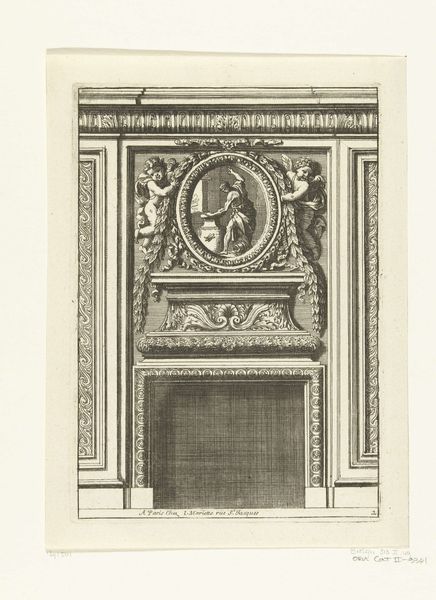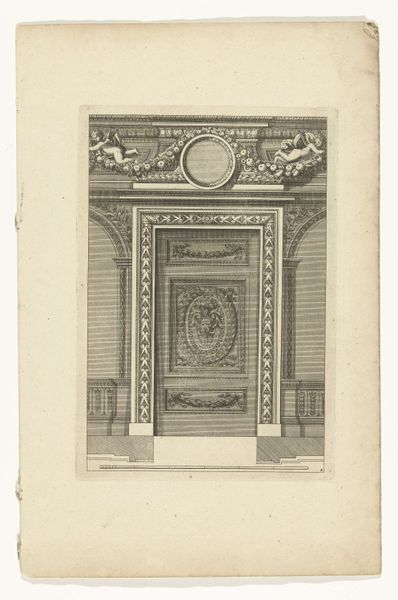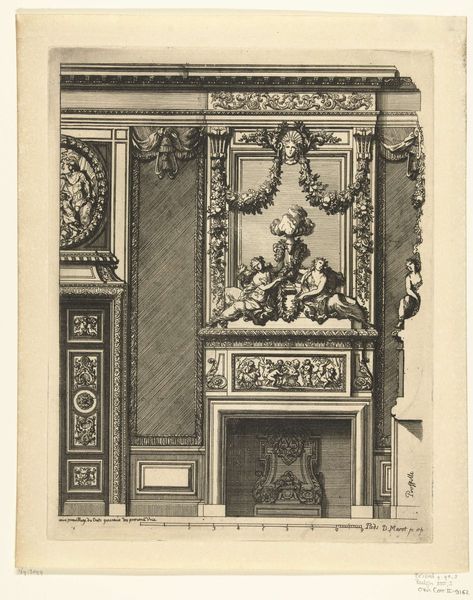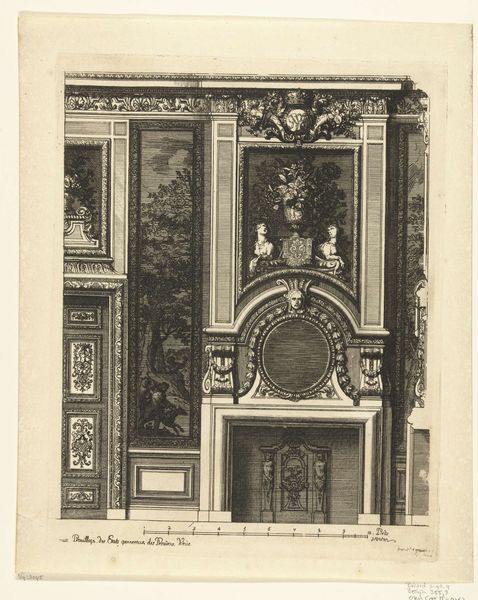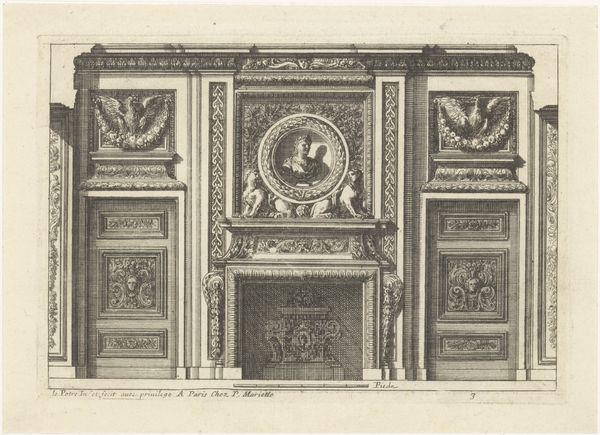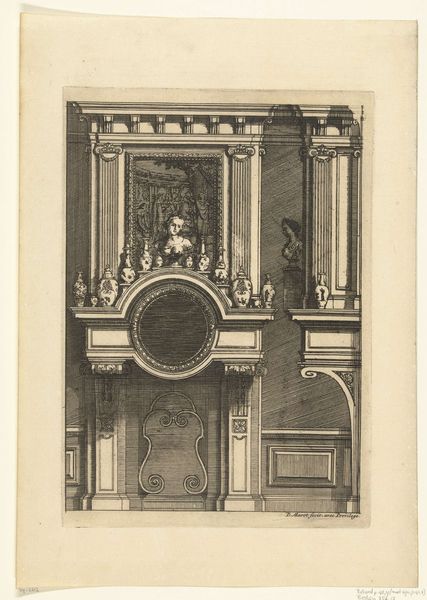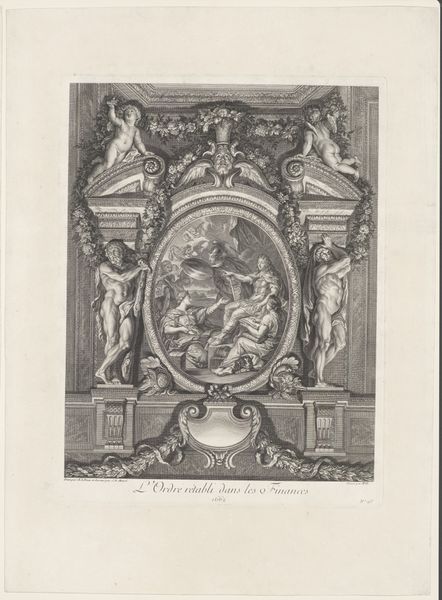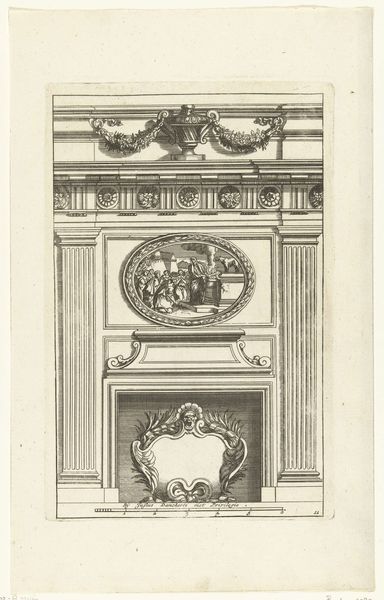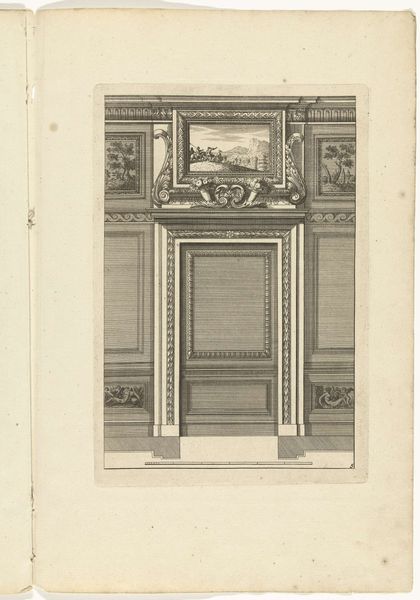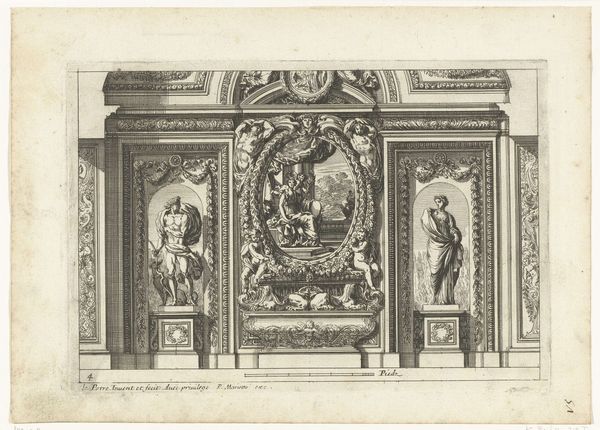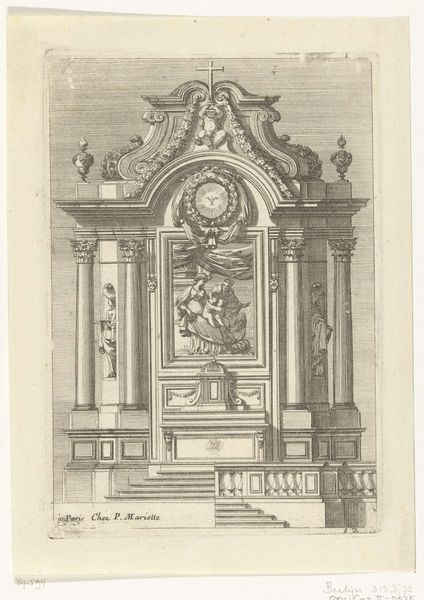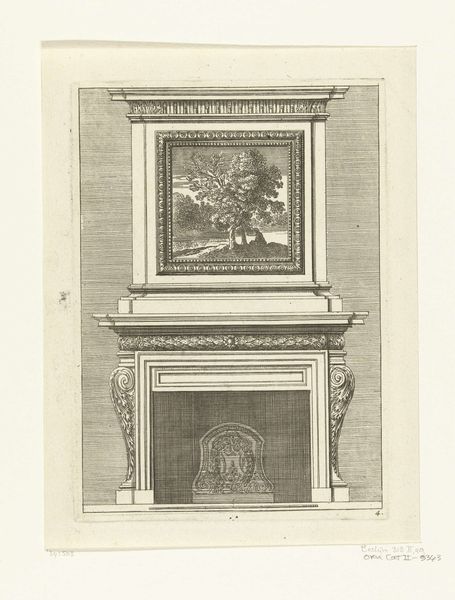
drawing, print, engraving
#
drawing
#
baroque
# print
#
form
#
line
#
history-painting
#
academic-art
#
decorative-art
#
engraving
Dimensions: height 233 mm, width 164 mm
Copyright: Rijks Museum: Open Domain
Curator: Welcome. Before us hangs a design attributed to Jean Lepautre, known as "Onderboezem met rond schilderij," likely created before 1742. It's currently part of the Rijksmuseum's collection. What's your initial read on this print? Editor: Gosh, it feels incredibly buttoned-up, doesn't it? Like a symphony of right angles and ornate frippery trying very hard to be impressive. It also makes me feel faintly claustrophobic, with so many small decorative flourishes. Curator: Indeed. Lepautre's technical skill shines through the elaborate use of line engraving. You rightly picked up on the formality. Notice how the baroque style emphasizes grandiose embellishments and idealized forms—typical of the era. Semiotically, each motif signals prestige. Editor: Prestige and…control? All those clean lines boxing in the round painting, which, admittedly, offers a momentary escape. Who are these cherubic fellows floating about? And does that central crest signify anything specific, or just add to the visual cacophony? Curator: Ah, the cherubs embody innocence and playfulness, a nod to the virtues and refinements associated with aristocracy. That crest… well, it represents lineage, authority, and a declaration of identity. These elements speak to the societal structures Lepautre aimed to please. Editor: Pleasing…yes. I can see the strategic deployment of elements that tick all the boxes for wealth and status. The circular painting feels almost rebellious, as if some free spirit wanted to get out. Even if the design lacks spontaneity, there's still an undeniable energy coursing through it. Like an orchestra, I guess. Controlled chaos in pursuit of harmony. Curator: Well put. There’s a latent exuberance barely contained within its rigorous framework. By delving into its form and structure, you discover hidden narratives beyond just surface grandeur. It's a frozen moment from the era in which ornamentation spoke as loudly as art. Editor: Right. So while my knee-jerk reaction was that it was 'buttoned-up,' recognizing that historical context allows me to see it less as constraint, more as considered messaging, as well as the echoes of artistry from another lifetime. Thanks.
Comments
No comments
Be the first to comment and join the conversation on the ultimate creative platform.
